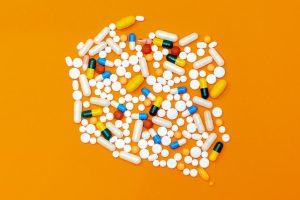Copper coating removes COVID-19 virus from surfaces while silver does not
- A Persistent Crisis: The Looming Specter of Drug Shortages in United States
- Rabies: The fatality rate nearly 100% once symptoms appear
- Human Brain Continues to Grow: Study Shows Increase in Size and Complexity
- CRISPR Genome Editing: From Molecular Principles to Therapeutic Applications
- Metformin Helps Immune System Better Recognize Cancer Cells
- Highlights of Prostate Cancer Research at the 2024 EAU Congress
Ccopper coating removes COVID-19 virus from surfaces while silver does not
- Red Yeast Rice Scare Grips Japan: Over 114 Hospitalized and 5 Deaths
- Long COVID Brain Fog: Blood-Brain Barrier Damage and Persistent Inflammation
- FDA has mandated a top-level black box warning for all marketed CAR-T therapies
- Can people with high blood pressure eat peanuts?
- What is the difference between dopamine and dobutamine?
- How long can the patient live after heart stent surgery?
Study finds copper coating removes COVID-19 virus from surfaces while silver does not.
Many pathogens are destroyed by silver and copper ions. Therefore, these metals are often used to coat implants and medical instruments.
Researchers from Ruhr University Bochum and the Department of Medical Virology and Materials Research, in collaboration with surgical researchers at Bergmannsheil University Hospital in Bochum, investigated whether these metals could also help control COVID-19 by rendering the SARS-CoV-2 virus harmless -19 Pandemic.
They demonstrated that the copper coating could eliminate the virus. The situation with silver is different. On May 3, 2022, the team published their findings in the journal Scientific Reports .

As a result of corrosion, copper and silver release positively charged ions into their environment that are harmful to bacteria in a number of ways, preventing their growth or killing them entirely.
This effect has long been exploited, for example by coating implants with these metals to prevent bacterial infection.
There are tricks that can be used to release more ions and intensify this effect. For example, the team led by materials researcher Prof. Alfred Ludwig used a so-called sputtering system, with which the thinnest metal layers or tiny nanospots can be applied to the support material.
Depending on the order or amount of individual metal applications, different surface textures are produced. If a precious metal such as platinum is applied at the same time, silver will corrode faster and release more antibacterial ions.

Ludwig outlines the principle of sacrificial anodes: “In the presence of a more noble metal, the inferior metal sacrifices itself. A surgical research team led by Prof. Dr. Marina Breisch from Manfred Köller has demonstrated that this sacrificial anode system can The effectiveness of bacteria, and has been published many times.”
However, whether viruses can also become harmless in this way has not been investigated in detail. Professor Stephanie Pfänder, a virologist, said: “This is why we analysed the antiviral properties of surfaces coated with copper or silver and of various silver-based sacrificial anodes, and also investigated the combination of copper and silver to understand possible synergies effect.” The team compared the effectiveness of these surfaces against bacteria with their effectiveness against viruses. “

Marina Breisch describes the effect of these surfaces on Staphylococcus aureus. “The surface with the sacrificial anode effect, especially the nanopatches composed of silver and platinum and the combination of silver and copper, effectively prevented bacterial growth.”
A different story emerged with SARS-CoV-2: a thin copper coating drastically reduced the viral load after just one hour.
On the other hand, the sputtered silver surface had only a small effect, and the silver nanopatches had no effect on the virus either.

“In conclusion: we demonstrate that copper-coated surfaces have a clear antiviral effect against SARS-CoV-2 within one hour, whereas silver-coated surfaces have no effect on viral infectivity,” says Stephanie Pfänder.
The successful interdisciplinary collaboration between materials research, clinical microbiology and virology will be deepened in future studies to identify other materials with the broadest antimicrobial effects.
Copper coating removes COVID-19 virus from surfaces while silver does not
(source:internet, reference only)
Disclaimer of medicaltrend.org
Important Note: The information provided is for informational purposes only and should not be considered as medical advice.



